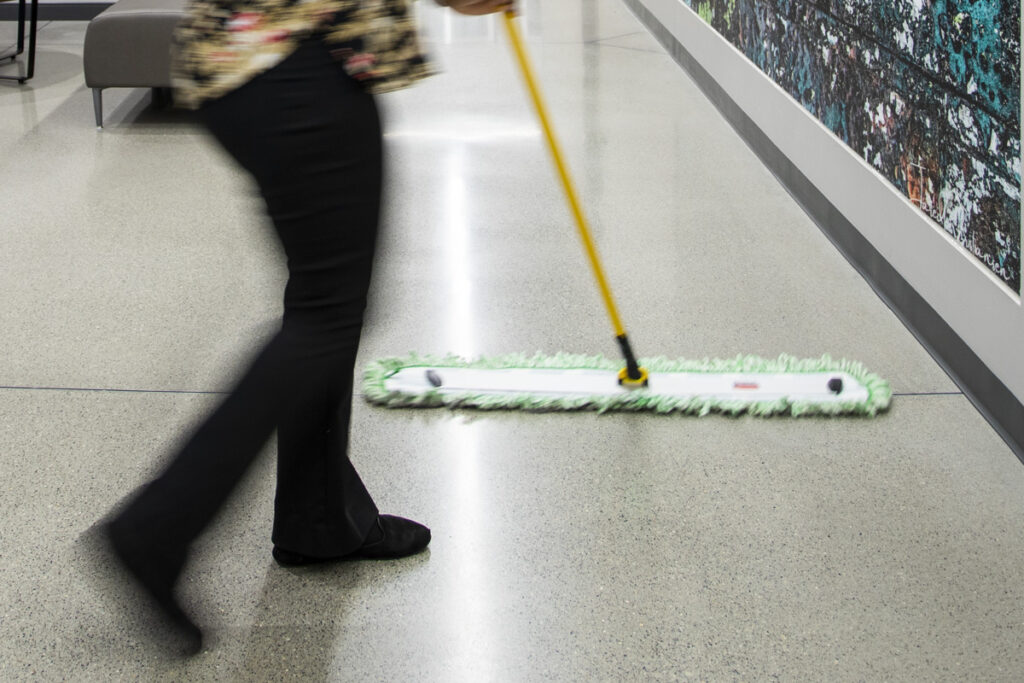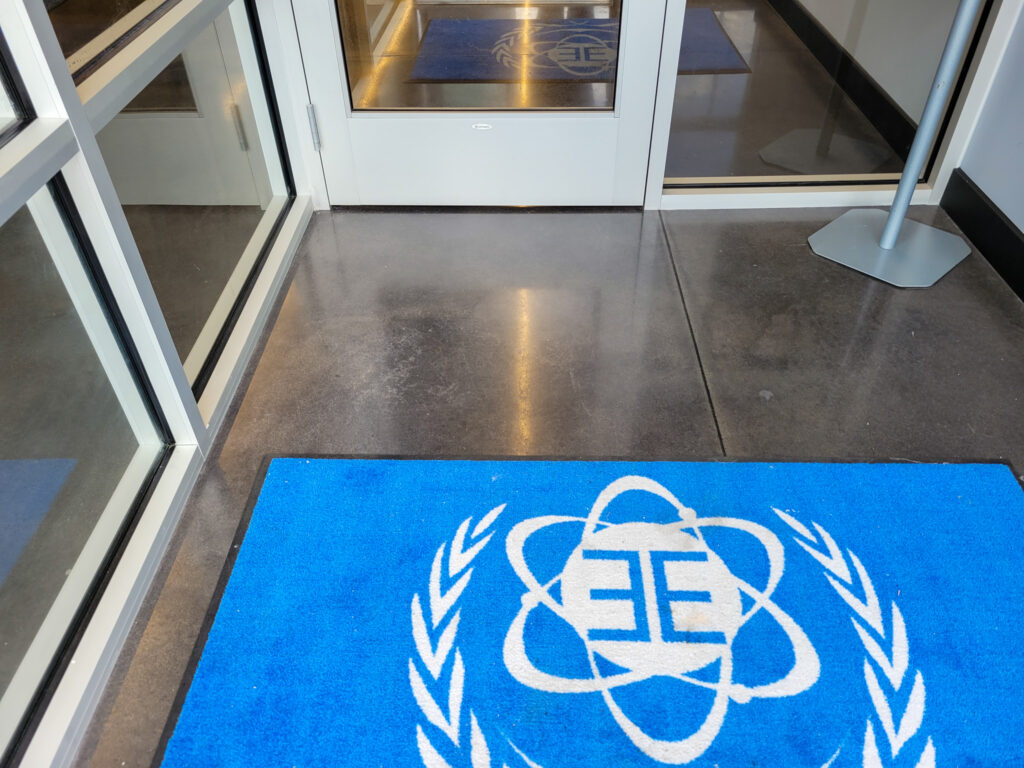A common myth of polished concrete is that it is slippery due to its smooth and glossy surface. However, just because the surface looks shiny does not mean it is slippery.
Polished concrete floors are common across America’s most highly trafficked consumer spaces, including grocery stores and retail giants like Walmart, Kroger, and Costco. These floors are chosen for their durability, low lifetime cost, simple maintenance, and great looks, but they also meet and exceed floor standards for slip resistance.

UNDERSTANDING STANDARDS
The Concrete Polishing Council, a specialty council of the American Society of Concrete Contractors, is the leading authority for polished concrete standards. They have researched and found that polished concrete meets and exceeds floor standards for slip resistance.
Common terms used in research and standards include:
– Static coefficient of friction (SCOF), which is how much effort is needed to start motion.
– Dynamic coefficient of friction (DCOF), which is how much effort is needed to maintain motion.
In 2015, the Concrete Polishing Council (CPC) conducted a scientific study to measure the slip resistance of polished concrete floors. They used measurement guidelines from Section 9.6 of ANSI A137.1-2012, American National Standards Specification for Ceramic Tile for their research testing. The standard used was a minimum wet dynamic coefficient of friction (DCOF) of 0.42. Their 2015 results came in between 0.48 and 0.59. In CPC Position Statement #2 Slip Resistance of Polished Concrete, the Council wrote that “slip resistance is not affected by the aggregate exposure class but does vary based on the gloss level,” and they noted that “all test results significantly exceeded” their standard measurement.
Note that both the Occupational Safety and Health Administration (OSHA) and ADA Accessibility Standards do not have set standards for slip resistance. According to OSHA in Federal Register 68:23527-23568, under their nonmandatory appendix (Appendix A to Subpart D), they recommend a guideline of a static coefficient of friction (SCOF) of 0.5, which only measures how much effort is needed to start motion.
The U.S. Access Board also does not define a minimum standard for slip resistance in their ADA Accessibility Standards. So, while both OSHA and ADA Standards acknowledge minimizing slipperiness is important, there is still a lot of gray space without a government authority for slip resistance.
OUR RECOMMENDATIONS
Design-driven solutions have to balance looks, performance, budget, and safety. There are sealed concrete and epoxy coating flooring options for slip resistance, which we recommend for areas that would be exposed to constantly wet conditions, including hair salons and animal care facilities. We have found that sealed floors with a GRIP additive can look dirty faster or develop traffic patterns quickly.
One of the safest things to do is to have walk-off mats at entrances. These mats will catch debris such as salt, dirt, and mud from being tracked onto the floor, keeping the surface clean and dry. Preventing debris from accumulating is a key step in preventing slips from happening on your polished concrete floor.
With a proper maintenance care plan in place, polished concrete floors can be a great solution for your space. Please know that all hard surfaces, including tile, wood, terrazzo, and polished concrete, can become slippery when wet. The owner and maintenance team must take an active role in cleaning and maintaining their floors to keep them safe.

SOURCES
American Society of Concrete Contractors. (2017). Position Statement #2 Slip Resistance of Polished Concrete. Retrieved from https://ascconline.org
American Society of Concrete Contractors. (2015). Slip Resistance Testing of Polished Concrete Report, Tile Council of North America, January 29, 2015. Retrieved from https://ascconline.org
Tile Council of North America, Inc. (2013). TCNA Technical Bulletin – Coefficient of Friction and the DCOF AcuTest®. Retrieved from https://www.tcnatile.com
Concrete Decor. (2015). CPAA Adopts New Position on Measurement of Polished Concrete Floors’ Slip-Resistance. Retrieved from https://www.concretedecor.net
Concrete Decor. (2014). Research Says Polished Concrete is the Most Slip-Resistant Flooring. Retrieved from https://www.concretedecor.net
Occupational Safety & Health Administration [OSHA]. (2003). Walking and Working Surfaces; Personal Protective Equipment (Fall Protection Systems) (Standards 1910). Retrieved from https://www.osha.gov
Occupational Safety & Health Administration [OSHA]. (2003). Static coefficients of friction for walking/working surfaces (Standards 1910.22). Retrieved from https://www.osha.gov
U.S. Access Board. (2014). ADA Accessibility Standards. Retrieved by https://www.access-board.gov/

